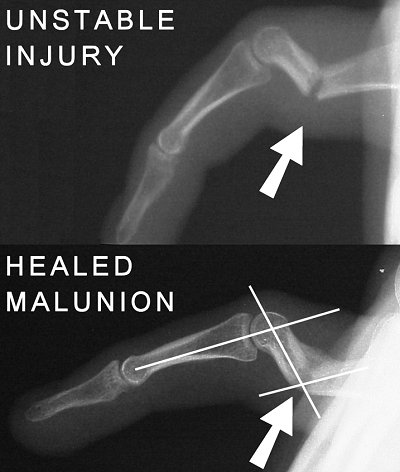

Figure Legend: Unstable phalangeal fractures
follow a predictable course regarding three complications. First, dorsal-palmar
angulation of mid shaft phalangeal fractures occurs due to asymmetric pull
of muscle tendon units. Proximal phalanx fractures typically fall
into a dorsal concave ("apex volar") angulation. Second, failure of reduction
often results in complete recurrence of fracture deformity. Third,
tendon imbalance due to malunion in angulation results in joint contractures
distal to the fracture equal in magnitude and opposite and direction as
the malunion. The top radiograph demonstrates initial angulation of such
a fracture. The fracture was reduced and stabilized with Kirschner
wires, but redisplaced after the original surgeon removed the fixation.
The bottom radiograph demonstrates the healed malunion, complete recurrence
of the initial deformity, with a flexion contracture of the proximal interphalangeal
joint equal in degree to the angle of malunion.
| e-Hand | Go Back | Search | Textbook |